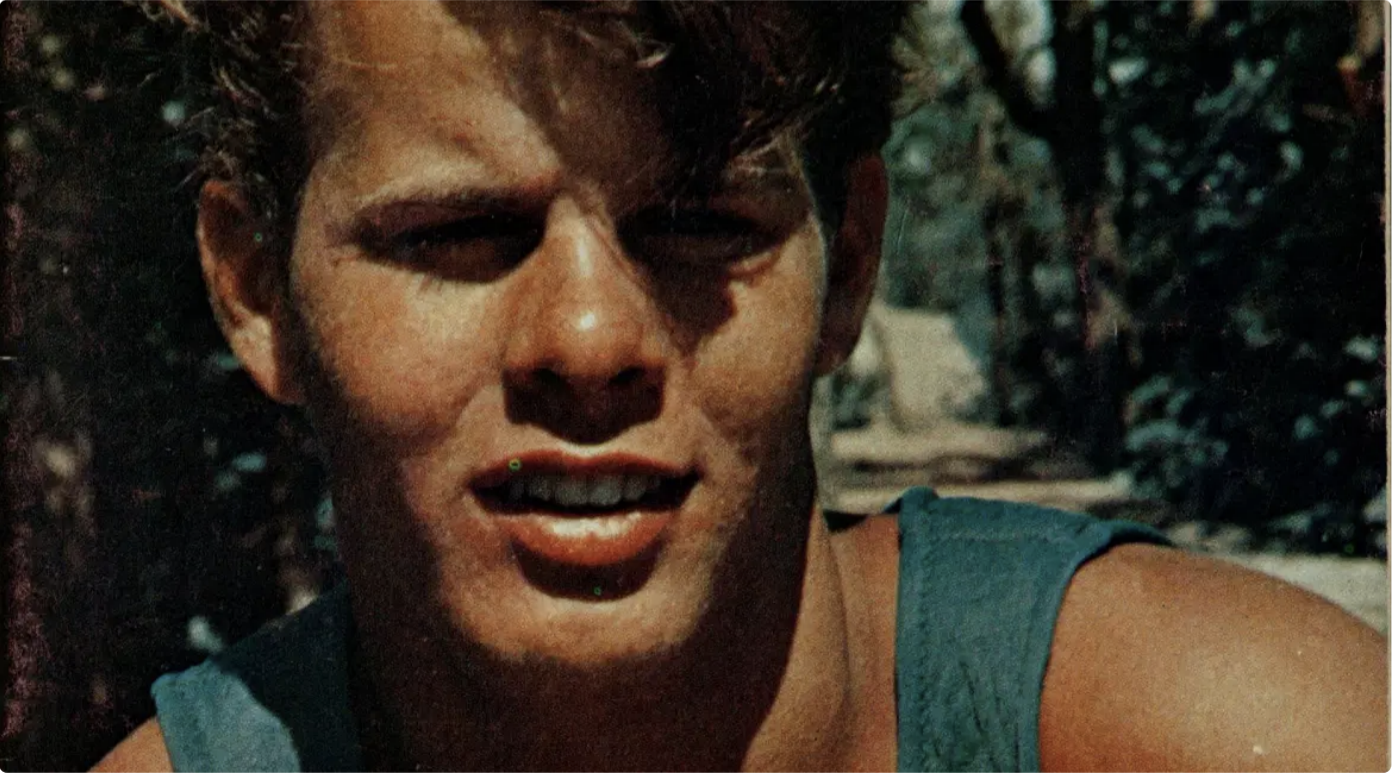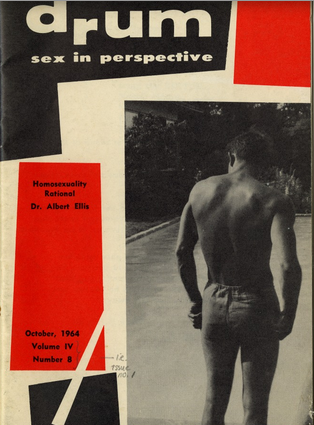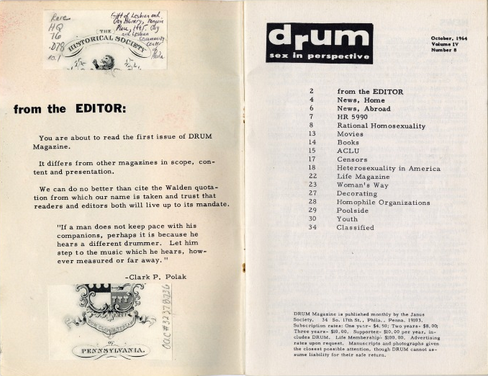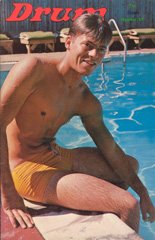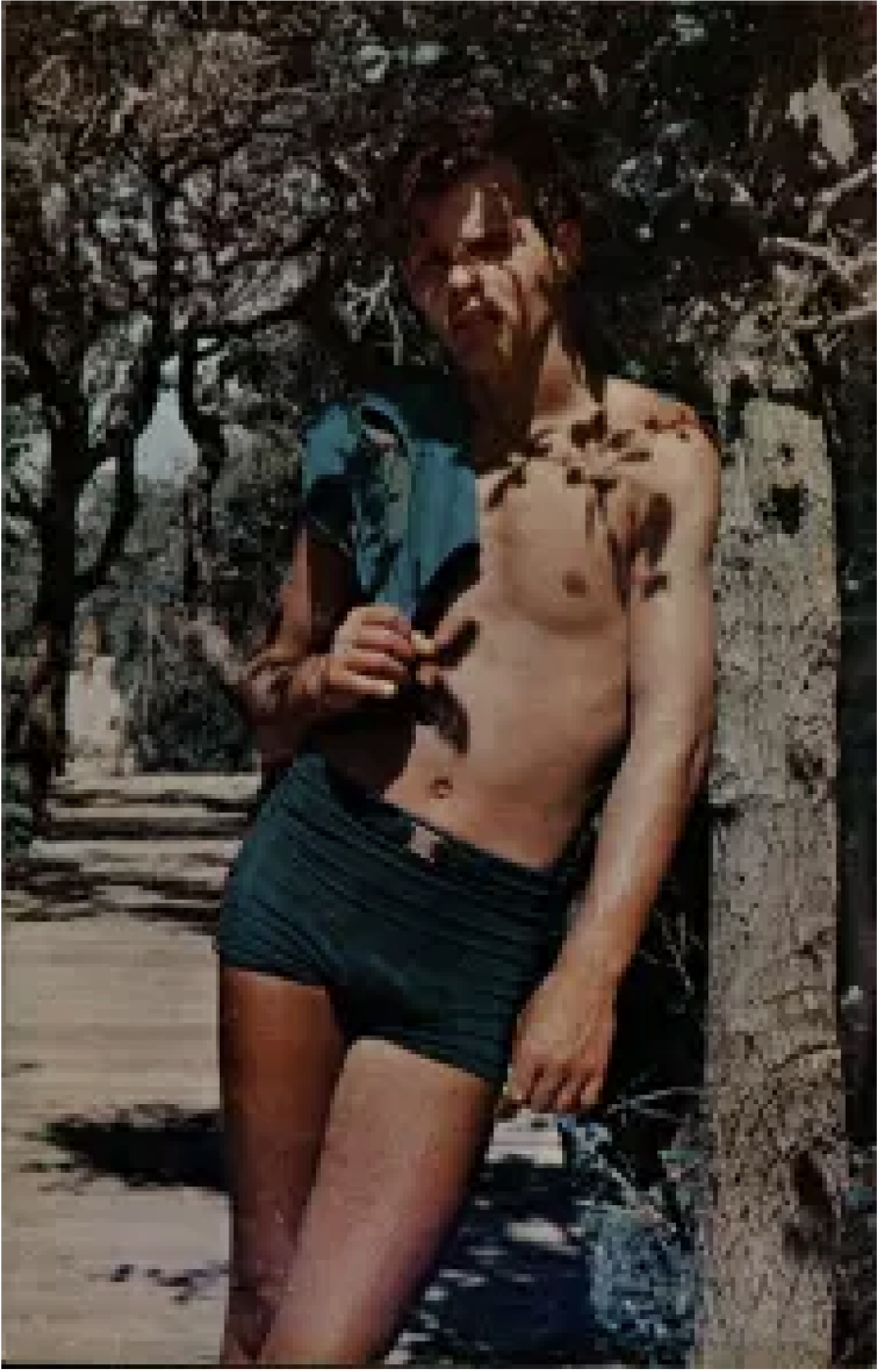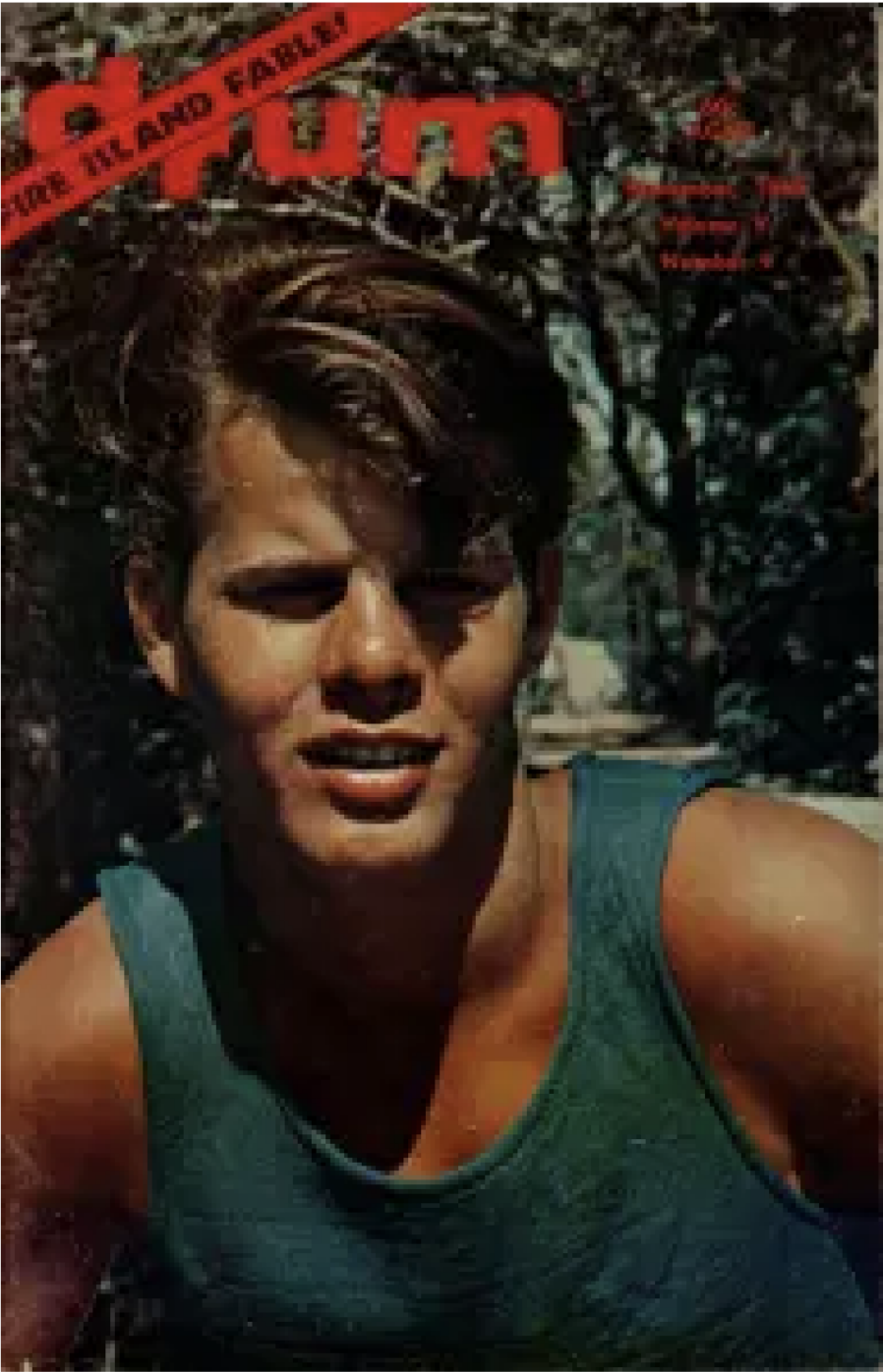Drum magazine and the Fire Island issue 1965.
“If a man does not keep pace with his companions, it is because he hears a different drummer.”
DRUM was an American LGBT-interest magazine based in Philadelphia, Pennsylvania. Published monthly beginning in 1964 by the homophile activist group the Janus Society and edited by Clark Polak, Drum took its title from a quote by Henry David Thoreau: “If a man does not keep pace with his companions, perhaps it is because he hears the beat of a different drummer.”
Drum differed from earlier homophile magazines in that it included a combination of news and erotica. Beginning in April 1965 it featured the first ongoing gay-themed comic strip, the erotic parody comic Harry Chess: That Man from A.U.N.T.I.E. by “A. Jay”. In December 1965, Drum published the first full-frontal male nude pictorial in an American magazine. DRUM also took a more militant editorial and political stance than other publications of the day. This combination quickly led to a monthly circulation of 10,000, the largest circulation at the time for any magazine of its kind.
“I envisioned a sort of sophisticated but down-to-earth, magazine for people who dug gay life and Drum’s view of the world.”
“And so, Clark Polak just sat in a corner and I said, ‘Hey, Clark, don’t you want to be Martin Luther King too?’ He said, ‘No, I just want to be Hugh Hefner.”
Biography:
POLAK, Clark (b. 15 October 1937; d. 18 September 1980), activist. One of the most important homophile activists of the 1960s, Clark Phillip Polak was the president of the Philadelphia-based Janus Society (1963–1969); the founder, publisher, and editor of Drum magazine (1964–1969); and the leader of the Homosexual Law Reform Society (1965–1969). In retrospect, most of the pre-Stonewall gay publications were relatively assimilationist and tame. But drum was racy, raunchy – and brilliant.
Drum (subtitled “sex in perspective”) began as the newsletter of Philadelphia’s Janus Society. Clark Polak, a brash homophile leader in the mid-Sixties, appropriated editorship of the newsletter, and told Streitmatter he “began drum Magazine as a consistently articulate, well-edited, amusing and informative publication. I envisioned a sort of sophisticated, but down-to-earth, magazine for people who dug gay life and drum’s view of the world.” (Or, a John Loughery wrote in The Other Side of Silence, “drum’s philosophy was plain enough: it was time to raise a little hell.”) In addition, Polak was the first gay editor to hire a professional clipping service to obtain gay-related articles from around the country. Veteran gay journalist Jack Nichols additionally told me that “drum published nudes – frontal nudes – first, in any gay publication in America.”
But even Ladder editor Barbara Gittings reflected on drum‘s positive impact with me, noting that despite showing abundant male flesh, drum and similar magazines that followed “were a way of getting information to people who wouldn’t bother to read it otherwise.” drum even boasted the first gay comic strip (the risqué “Harry Chess: The Man from A.U.N.T.I.E.”). Polak’s formula proved enormously successful; by 1966, drum‘s 10,000 circulation surpassed that of all the then-extant homophile publications combined.
However, that formula also left Polak vulnerable to police and legal intervention when the Buffalo, New York Postmaster seized drum‘s March 1966 issue. While ultimately distributed, Polak later proved less fortunate. drum abruptly ceased publication by May 1969, as Polak awaited a federal grand jury indictment for mailing allegedly obscene material. He evaded a prison sentence only by agreeing to cease publishing drum and to leave Philadelphia.
Yet drum‘s movement contributions could not be denied, nor could its founder’s aspirations be denigrated. New York pre-Stonewall activist Dick Leitsch recalled for me a heated discussion among movement leaders in the Sixties regarding “which one of them is the Martin Luther King of the gay movement. ... And they went on and on, just yelling and screaming .... And so, Clark Polak just sat in a corner and I said, ‘Hey, Clark, don’t you want to be Martin Luther King too?’ He said, ‘No, I just want to be Hugh Hefner.'” Polak never quite reached that level of sophistication with Drum, but not for lack of trying.
1965. As the world was discovering Fire Island, Drum magazine visited Cherry Grove and featured this:
Drum was light hearty alternative to the more solemn and staid homophile magazines issued in its day, and contains a mixture of seriousness and humor. Interspersed with illustrations (including the regular comic strip “Harry Chess: That Man From A.U.N.T.I.E.” by A. Jay and artwork by Dolphus Smith, Jr.) and physique photographs taken by Bob Anthony, Mel Roberts, Frank Hollfelder, Jovan Studio, Neil Edwards, Jay Mitchell, and Models Studio,
Published by the Janus Society of America, an early homophile organization out of Philadelphia, Pennsylvania.
Beginning with the December, 1965 issue of drum, two versions were published: one for subscribers only containing four additional, unpaginated photographic pages, and the other for newsstand distribution without this insert Drum (subtitled “sex in perspective”) was racy, raunchy – and brilliant. Clark Polak, a brash homophile leader in the mid-Sixties, appropriated editorship of the newsletter, and told Streitmatter he “began drum Magazine as a consistently articulate, well-edited, amusing and informative publication. I envisioned a sort of sophisticated, but down-to-earth, magazine for people who dug gay life and drum’s view of the world.” (Or, as John Loughery wrote in The Other Side of Silence , “drum’s philosophy was plain enough: it was time to raise a little hell.”) In addition, Polak was the first gay editor to hire a professional clipping service to obtain gay-related articles from around the country. Veteran gay journalist Jack Nichols additionally told me that “drum published nudes – frontal nudes –first, in any gay publication in America.” But even Ladder editor Barbara Gittings reflected on drum ‘s positive impact with me, noting that despite showing abundant male flesh, drum and similar magazines that followed “were a way of getting [movement activity] information to people who wouldn’t bother to read it otherwise.” By 1966, drum ‘s 10,000 circulation surpassed that of all the then-extant homophile publications combined.
However, that formula also left Polak vulnerable to police and legal intervention when the Buffalo, New York Postmaster seized drum ‘s March 1966 issue. While ultimately distributed, Polak later proved less fortunate. drum abruptly ceased publication by May 1969, as Polak awaited a federal grand jury indictment for mailing allegedly obscene material. He evaded a prison sentence only by agreeing to cease publishing drum and to leave Philadelphia.
Info from Wikipedia.


